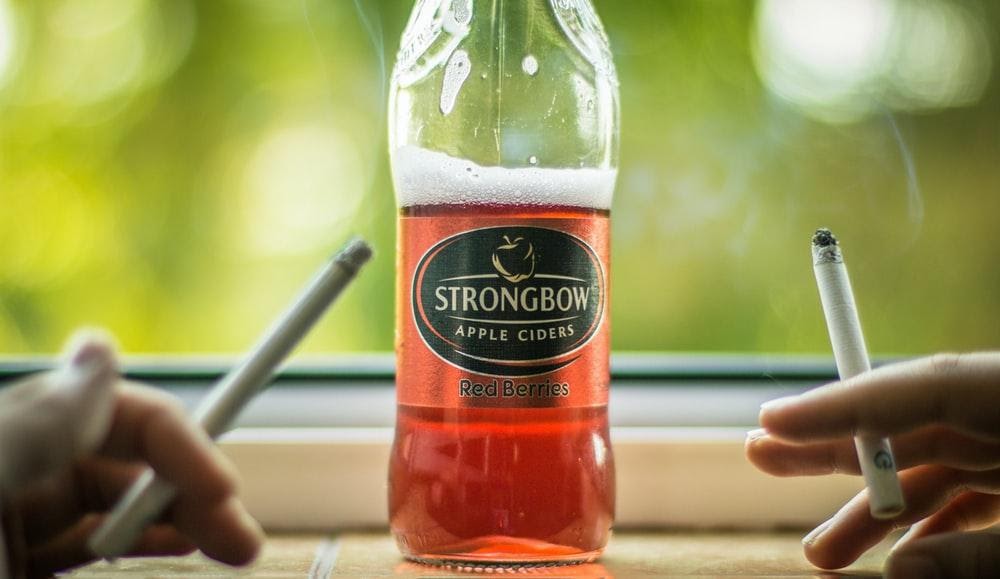While growing up, most kids might view smoking and drinking as privileges and cool activities of adults to engage in. However, media portrayal of alcohol use and smoking helps to perpetuate the appeal of these routines.
Although smoking is known for causing lung cancer, this routine is a threat to your skin. Next to chemicals and the sun, tobacco is among the major contributors to your skin conditions.
Alcohol has similar impacts by destroying the supply of vitamin A. This lowers the responsibility of skin as an important and first line of defense against infections and bacteria. Some of the skin conditions that smoking and alcohol drinking cause include:
1. Psoriasis
This is an inflammatory skin condition, which produces scaly, itchy, and red patches. Smoking is a great risk factor for getting psoriasis. In fact, a study shows that smoking is damaging your skin, and the more you smoke tobacco, the higher the risks of developing psoriasis.
Nicotine in tobacco affects skin cell growth, immune system, and skin inflammation, all of which may contribute a lot to the development of this condition.
Apart from smoking, alcohol intake might as well stimulate psoriasis flare-ups, especially in the case of excessive consumption. This is because alcohol is associated with the inflammatory response in the body in different ways. Part of it is that it disrupts the perfect balance between bad and good bacteria in the gut, leading to inflammation in the intestines.
2. Skin Cancer
Smoking cigarettes increases the risk of getting a kind of cancer referred to as squamous cell carcinoma when compared to non-smokers. Apart from that, there is also an increased risk of oral cancer and leukoplakia (pre-cancer).
In fact, around 78% of cases of lip cancer and oral cancer happens in smokers. Basically, smoking doesn’t appear to increase the risks of basal cell carcinoma.
3. Premature Aging
Usually, smoking deprives your skin of nutrients and oxygen. Although some smokers look pale, others might have uneven colors. The smoking habit can also stain the smoker’s teeth and fingers, making them more vulnerable to patches or spots of darker skin, particularly if they spend more time under the sun.
Today, there are more than 3,500 chemicals in tobacco, some of which may trigger the destruction of elastin and collagen that gives the skin elasticity and strength.
Smoking also damages the building blocks of the skin, making it sag on the breasts, face, and even arms. Plus, smokers might develop deeper and earlier wrinkles caused by some muscles around the mouth.
4. Adult Acne
If you are no longer a teenager, it means you are likely to have spotty skin when you start smoking. According to a Dermato Endrocrinology study, 45% of smokers have adult acne, and only 10% are non-smokers.
Researchers also suggest nicotine and other nasties in cigarettes may result in changes that increase the production of oil in the skin. This means there will be more breakouts and greater oiliness.

5. Vasculitis
The blood flow constricted because of nicotine may result in Buerger’s disease. This is a type of vasculitis where blood clots may happen anywhere in your body.
When the blood vessels in the feet and hands are blocked, they might result in pain and tissue damage of lacking blood. Severe cases might as well have ulcers on the feet and hands, resulting in gangrene and amputation of gangrenous toe or finger.
6. Skin Discoloration
This is the most obvious skin condition related to smoking. Many years of smoking can leave your hands with yellow stains from toxins in cigarettes, which you may not remove through cleaning.
Apart from skin discoloration, smoke from cigarettes is also related to creating a grey or yellow complexion on the skin. Others might also notice that their skin tone has become uneven or developed discolored spots after several years of smoking.
7. Dry Skin
Apart from cold winds, sun exposure, and a low-fat diet, drinking can also result in dry skin. Your choice of beverages may strip your skin of moisture. Individuals taking a high intake of alcohol and caffeine are more vulnerable to dry skin.
Though regular coffee habit has less effect than drinking alcohol as it has more diuretic impact that puts you more at risk of dehydration. When you get dehydrated, less water will be available to moisturize your skin, resulting in the skin, which appears flaky and rough and is prone to itching and sensitivity.
It is important to watch your alcohol intake to protect your skin and its effects. Plus, moderate your alcohol intake by alternating with caffeine-free soft drinks and water so as to avoid dehydration.

Final Thoughts!
Quitting smoking and use of alcohol is challenging. However, your doctor might help you make a great plan. This plan may involve using different prescription and nonprescription medications, which can enable you to quit. You may look for a nicotine prescription Australia to learn more about ways to stop smoking.
You may also turn to a rehab center that has other members sharing the same stories. This way, you can learn the long and short-term benefits of stopping your habit.
 HammBurg Be informed with latest news, reviews, entertainment, lifestyle tips, and much more.
HammBurg Be informed with latest news, reviews, entertainment, lifestyle tips, and much more.




